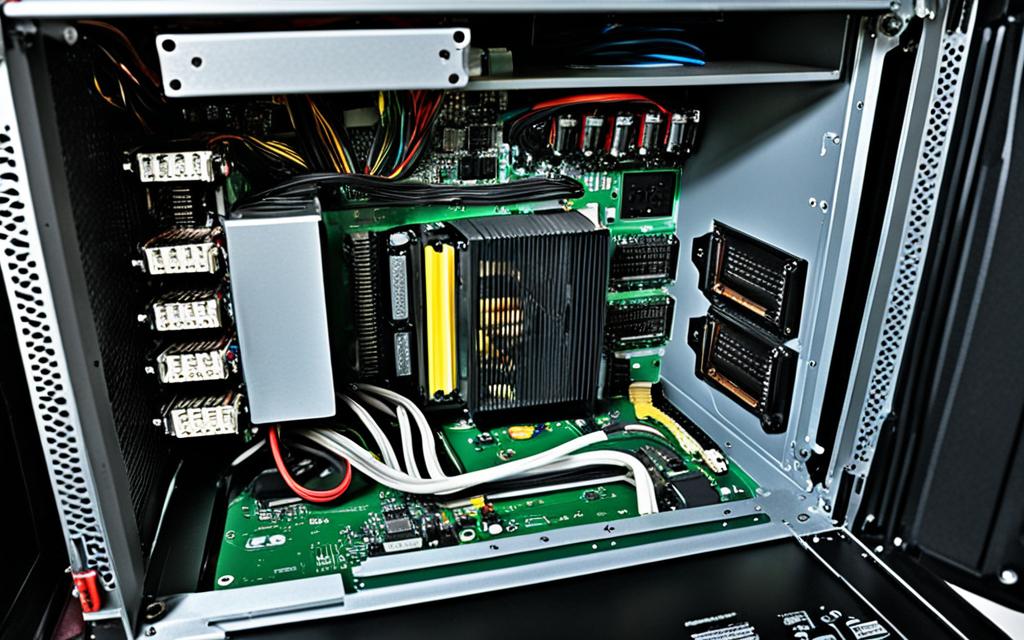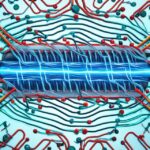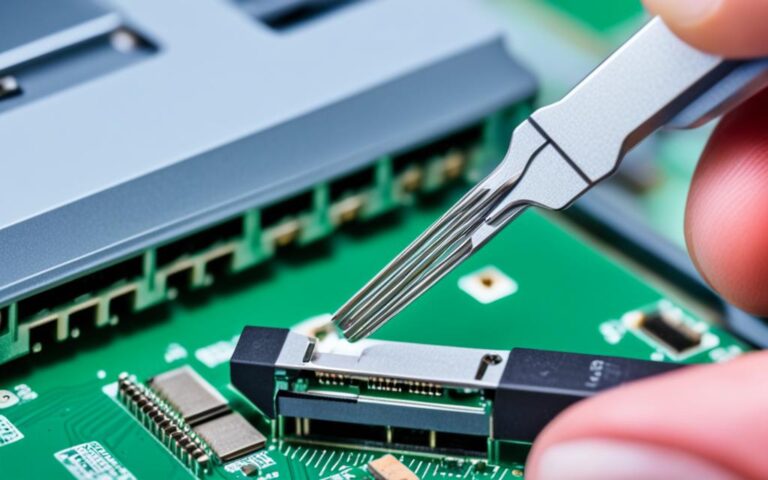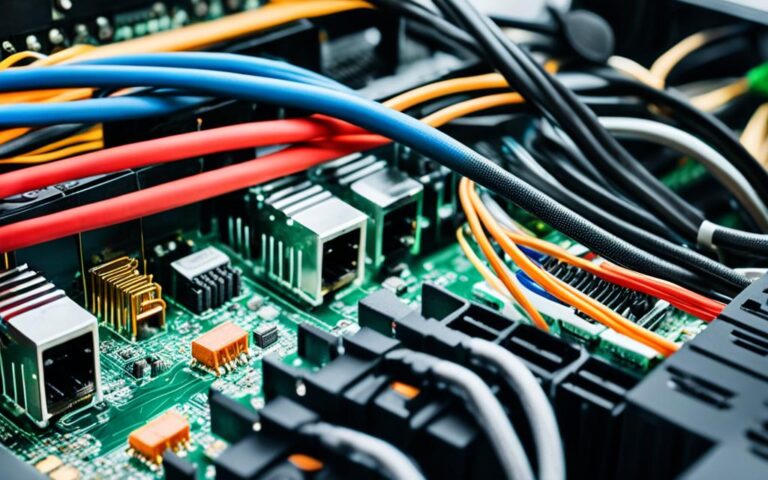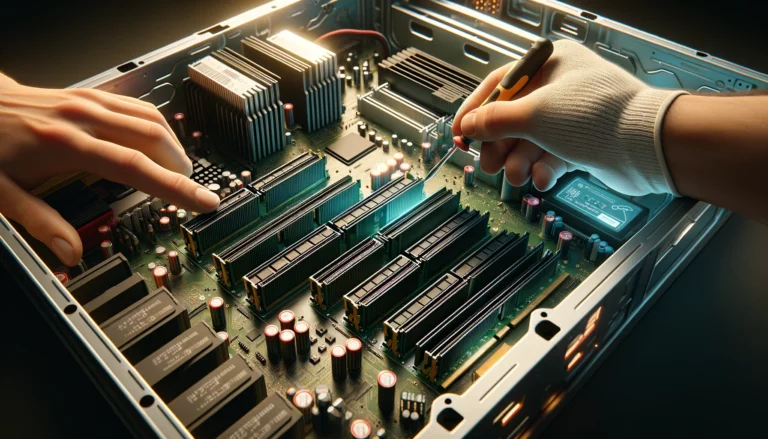Upgrading and Repairing Desktop Power Supplies
A computer power supply, also known as a power supply unit or PSU, is a critical component that converts AC power from a wall outlet into the DC power that powers all of the computer’s internal components. Understanding the intricacies of a power supply can help when building or upgrading a system.
In this guide, we will explore the different types of power supplies, the components that make up a power supply, and how power supplies work. We will also discuss the importance of power supply upgrades for enhancing performance and longevity. Whether you’re looking to upgrade your desktop power supply or troubleshoot and repair an existing one, this guide will provide you with valuable insights to ensure your system operates at its best.
Power supply upgrades play a crucial role in optimizing the performance and longevity of a desktop computer. By investing in a high-quality power supply and keeping it well-maintained, you can be confident in the reliable operation of your system. Upgrading your power supply allows you to handle power-hungry components, ensuring smooth performance even during demanding tasks.
Furthermore, upgrading or repairing your power supply can prevent potential issues such as power fluctuations, voltage drops, or insufficient power delivery that can negatively impact your system’s stability and overall performance. It is essential to choose a power supply that meets your computer’s specific requirements, taking into account factors such as wattage, efficiency, and form factor.
By understanding the importance of power supply upgrades, desktop power supplies, and the intricacies of upgrading and repairing them, you can make informed decisions that can enhance your system’s performance and longevity. Stay tuned as we delve deeper into the different types of power supplies, their components, and how they work. Whether you’re a DIY enthusiast or a professional looking for expert advice, this guide is designed to provide you with valuable knowledge and practical tips to ensure your power supply meets the specific demands of your computer system.
Types of Power Supplies
When upgrading a desktop computer, it is crucial to consider the different types of power supplies available. Understanding the characteristics and form factors of each type can help you choose the right power supply for your specific needs.
1. ATX Power Supply:
The ATX (Advanced Technology Extended) power supply is the standard form factor for most desktop computers. It offers a balance between power output and size, making it suitable for a wide range of systems. ATX power supplies are designed to fit standard ATX cases and provide sufficient power for the motherboard, CPU, graphics card, and other components.
2. SFX Power Supply:
SFX (Small Form Factor) power supplies are smaller in size compared to ATX power supplies. They are specifically designed for mini-ITX cases or compact builds where space is limited. Despite their smaller size, SFX power supplies provide sufficient power for the system’s components, making them ideal for small form factor builds.
3. TFX Power Supply:
TFX (Thin Form Factor) power supplies are even smaller and slimmer than SFX power supplies. They are commonly used in slim or low-profile cases, where space constraints are a significant consideration. TFX power supplies are designed to deliver power efficiently while maintaining a compact form, making them suitable for space-restricted builds.
By understanding the different types of power supplies available, you can select the one that best suits your system’s form factor and power requirements. Each form factor has its own advantages and considerations, providing flexibility in your choice of power supply.
Here is a visual representation of the different power supply form factors:
Components of a Power Supply
A power supply is an essential component of a desktop computer, composed of various crucial parts that work together to deliver stable and consistent power to the internal components. Understanding these components is vital for building or upgrading a computer system. Let’s explore some of the key components:
Transformers
Transformers play a vital role in a power supply by converting high-voltage AC power from the wall outlet into lower-voltage AC. This conversion is necessary as most computer components operate on lower voltages. Transformers ensure that the power supply delivers the appropriate voltage to the various components.
Capacitors
Capacitors are another essential component that forms an integral part of the power supply. They store and release electrical energy, helping to stabilize the flow of power and maintain consistent voltage levels. Capacitors act as reservoirs of energy, ensuring a steady supply of power to the computer’s components.
Cooling Fans
Cooling fans are responsible for dissipating heat generated during the power conversion process. As the power supply converts AC power to DC power, it generates heat. Cooling fans help regulate the temperature by expelling hot air and keeping the internal components cool. An efficient cooling system is crucial for maintaining optimal performance and extending the lifespan of the power supply.
Connectors
Connectors are the interface between the power supply and the different components inside the computer. They provide power to the motherboard, CPU, graphics card, storage devices, and other hardware. These connectors ensure a reliable and secure connection, enabling the power supply to distribute power efficiently to all the components in the system.
Understanding the role and importance of these components is essential when selecting or troubleshooting a power supply. Now that we have explored the components, it’s time to delve into how power supplies actually work in the next section.
How Power Supplies Work
Power supplies play a crucial role in converting AC power from a wall outlet into the DC power necessary for a computer’s internal components to function efficiently. Understanding the process of AC to DC conversion, voltage regulation, and power distribution is vital when troubleshooting issues and making informed decisions about purchasing a power supply.
In the first step of the conversion process, known as rectification, the power supply transforms the AC power from the wall outlet into DC power. This rectification process involves converting the alternating current (AC) waveform into a direct current (DC) waveform, ensuring a consistent power delivery.
After converting the power, the power supply regulates the voltage to maintain stability and prevent any fluctuations in power levels. Voltage regulation is essential in ensuring that the DC power supplied to the computer’s components remains within the necessary operating range, minimizing the risk of damage and maximizing performance.
“Voltage regulation is essential in ensuring stable and consistent power delivery.”
Finally, the power supply distributes the regulated DC power to the different components of the computer through its connectors. These connectors, such as those for the motherboard, CPU, graphics card, and storage devices, provide the necessary power to each component, allowing them to operate effectively.
Understanding the inner workings of power supplies can be beneficial when troubleshooting issues with power delivery or when selecting the appropriate power supply for specific system requirements. By ensuring proper AC to DC conversion, voltage regulation, and power distribution, power supplies enable the smooth operation and longevity of desktop computers.
Importance of Wattage and Efficiency Ratings
When it comes to choosing a power supply for your computer, wattage and efficiency ratings are two crucial factors to consider. Understanding these aspects is essential for selecting a power supply that meets the power requirements of your system while operating efficiently. Let’s explore why wattage and efficiency ratings matter.
Wattage: Meeting Power Demands
Wattage refers to the maximum amount of power that a power supply can deliver to your computer’s components. It determines whether the power supply can adequately and consistently power your system. To ensure optimal performance and prevent potential issues, it’s crucial to calculate the power requirements of each component in your system. This assessment can be done using power supply calculators, which help determine the total power consumption of your system.
Using an underpowered power supply can have severe consequences. It may lead to system instability, crashes, or even damage to your components. Therefore, it’s crucial to choose a power supply with wattage that matches or exceeds the total power consumption of your system.
Efficiency Ratings: Maximizing Power Delivery
The efficiency rating of a power supply determines how effectively it converts AC power from the wall outlet into DC power for your components. Higher efficiency power supplies waste less electricity as heat and deliver more power to your computer’s components, resulting in improved energy usage and performance.
One essential certification to consider is the 80 PLUS certification. This certification verifies the power supply’s efficiency at different workloads, ranging from 20% to 100% of its maximum capacity. The higher the 80 PLUS rating, the more efficient the power supply is.
By selecting a power supply with a higher efficiency rating, you can benefit from reduced energy consumption, lower electricity bills, and a cooler-running system. Additionally, higher efficiency power supplies are often built with better components, leading to increased reliability and longevity.
Final Thoughts
Understanding the importance of wattage and efficiency ratings is crucial when selecting a power supply for your computer. Ensuring the power supply meets your system’s power demands safeguards against potential issues like system instability or component damage. Choosing a power supply with higher efficiency ratings, such as those with 80 PLUS certification, maximizes power delivery and offers energy savings in the long run.
Make informed decisions by using power supply calculators, assessing individual component power requirements, and considering efficiency ratings. By doing so, you can enhance your system’s performance, longevity, and overall energy efficiency.
Conclusion
Power supply upgrades play a vital role in optimizing the performance and longevity of your desktop computer. By understanding the different types of power supplies, their components, and how they work, you can make informed decisions when building or upgrading your system.
When selecting a power supply, it’s crucial to consider the wattage and efficiency ratings. The wattage determines the amount of power the supply can deliver to your components, ensuring they operate at their full potential. Additionally, efficiency ratings such as the 80 PLUS certification indicate how effectively the power supply converts electrical energy, minimizing waste and promoting energy conservation.
It’s also important to be aware of common power supply issues and how to troubleshoot them. By understanding potential problems and implementing appropriate solutions, you can maintain the stability and reliability of your computer system, avoiding unexpected disruptions and costly repairs.
By following these guidelines and making informed choices about power supply upgrades, you can enhance your desktop’s performance, ensure its longevity, and enjoy a seamless computing experience.
